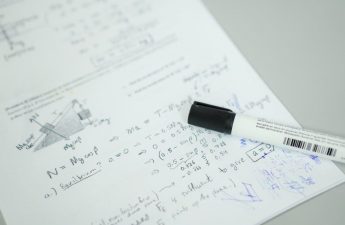Stephen Abbott’s “Understanding Analysis”: An Overview
Stephen Abbott’s “Understanding Analysis” is designed to offer a comprehensive exploration of real analysis․ It aims to challenge students, fostering mathematical intuition․ The book emphasizes a rigorous approach to functions of a real variable․
About Stephen Abbott
Stephen Abbott is a Professor of Mathematics at Middlebury College․ He has twice won Middlebury’s Perkins Award for Excellence in Teaching, in 1998 and 2010․ Abbott’s research spans operator theory, functional analysis, algorithmic foundations of robotics, and the intersection of science and mathematics․ As the author of “Understanding Analysis,” Abbott aims to provide students with a mathematically rigorous approach to studying functions of a real variable; The book is designed for a one-semester course, emphasizing the importance of developing mathematical intuition through challenging topics, rather than simply verifying familiar calculus theorems․ Abbott’s goal is to expose students to the inherent rewards of a rigorous mathematical approach․ “Understanding Analysis” is well-regarded for its clear writing and well-motivated development of theory․ Abbott’s approach ensures that students not only learn the material but also appreciate the beauty and importance of real analysis․ His work reflects a commitment to excellence in both teaching and research, making significant contributions to the field of mathematics and its pedagogy․ Abbott’s dedication to providing a comprehensive and intuitive exploration of core concepts is evident throughout the book․

Key Concepts Covered in “Understanding Analysis”
“Understanding Analysis” covers core concepts in real analysis, laying a solid foundation․ Key areas include the real number system, sequences and series, basic topology of R, functional limits and continuity, and the derivative․ These topics are explored rigorously․
The Real Number System
The study of the real number system forms the essential bedrock upon which the rest of real analysis is built, and Stephen Abbott meticulously constructs this foundation in “Understanding Analysis․” The book delves into the properties that define the real numbers, exploring completeness, ordering, and algebraic structure with precision․ From the outset, Abbott emphasizes the significance of understanding the nuances of the real number system, moving beyond a mere acceptance of its existence to a rigorous examination of its defining characteristics․
Abbott doesn’t shy away from addressing the subtleties that often trip up students encountering real analysis for the first time․ He tackles the completeness axiom head-on, elucidating its role in distinguishing the real numbers from the rational numbers․ Through careful exposition and illustrative examples, he demonstrates how completeness guarantees the existence of limits for bounded monotonic sequences and the least upper bound property, concepts that are fundamental to understanding convergence and continuity․
Furthermore, Abbott underscores the importance of the algebraic and order properties of the real numbers, showing how these properties interact to shape the behavior of functions and sequences․ He meticulously explores the consequences of these properties, leading the reader to a deeper appreciation of the underlying structure of the real number system․ The book also touches upon topics like the Archimedean property and its implications, providing a thorough grounding in the essential tools needed for subsequent study in real analysis․ By emphasizing a rigorous and intuitive approach, Abbott equips readers with a solid understanding of the real number system, setting the stage for a successful journey into the more advanced topics of analysis․
Sequences and Series
In “Understanding Analysis,” Stephen Abbott dedicates significant attention to the study of sequences and series, recognizing their central role in real analysis․ The book provides a thorough exploration of the convergence and divergence of sequences, equipping readers with the tools to analyze their behavior rigorously․ Abbott introduces key concepts such as limits, subsequences, and Cauchy sequences, carefully elucidating the relationships between them․
Abbott doesn’t just present definitions and theorems; he also delves into the intuition behind them, helping students develop a deeper understanding of the underlying principles․ He provides numerous examples and exercises that challenge readers to apply their knowledge and hone their problem-solving skills․ For instance, the book explores various convergence tests, such as the ratio test, the root test, and the comparison test, demonstrating how these tests can be used to determine the convergence or divergence of a given series․
Furthermore, Abbott addresses the subtleties of working with infinite series, emphasizing the importance of absolute convergence and conditional convergence․ He provides clear explanations of the concepts of uniform convergence and power series, laying the groundwork for more advanced topics in analysis․ The book also explores the properties of special series, such as the geometric series and the harmonic series, providing insights into their behavior and applications․ By combining rigorous proofs with intuitive explanations, Abbott empowers readers to confidently navigate the complexities of sequences and series, preparing them for further study in real analysis and related fields․ The focus is on building a strong foundation and fostering a deep appreciation for the elegance and power of these fundamental concepts․

Basic Topology of R
Stephen Abbott’s “Understanding Analysis” dedicates a section to the basic topology of the real number line, denoted as R․ This section is crucial for establishing a solid foundation for understanding continuity, differentiability, and other fundamental concepts in real analysis․ Abbott introduces key topological concepts such as open sets, closed sets, and compact sets within the context of R․ He meticulously defines these concepts and provides numerous examples to illustrate their properties․ Open sets, for instance, are defined as sets where every point has a neighborhood entirely contained within the set, while closed sets are defined as sets that contain all their limit points․
The book explores the relationships between these concepts, demonstrating how they interact to shape the structure of the real number line․ Abbott also delves into the concept of compactness, which is a crucial property in analysis․ He presents the Heine-Borel theorem, which states that a subset of R is compact if and only if it is closed and bounded․ This theorem is a cornerstone of real analysis, providing a powerful tool for proving various results related to continuity and convergence․
Furthermore, Abbott discusses the notions of connectedness and completeness, which are essential for understanding the behavior of functions on the real line․ He provides clear explanations of these concepts and illustrates their importance with examples and exercises․ The section on basic topology of R in “Understanding Analysis” is designed to equip readers with the necessary tools to analyze the properties of sets and functions on the real line rigorously․ By mastering these concepts, readers can gain a deeper understanding of the foundations of real analysis and prepare themselves for more advanced topics․ The presentation is careful and accessible, making it suitable for undergraduate students encountering these ideas for the first time․
Functional Limits and Continuity
In Stephen Abbott’s “Understanding Analysis,” the section on functional limits and continuity forms a cornerstone of real analysis, building upon the foundational concepts of the real number system and basic topology․ Abbott provides a rigorous treatment of limits, moving beyond the intuitive understanding often presented in calculus courses․ He introduces the epsilon-delta definition of a limit, emphasizing the precise quantification required to establish the existence of a limit․ This definition is carefully explained and illustrated with numerous examples, allowing students to grasp the subtleties involved in proving limit statements․
The text then transitions to the concept of continuity, defining a function as continuous at a point if its limit at that point exists and equals the function’s value․ Abbott explores various properties of continuous functions, such as the preservation of connectedness and compactness․ He also introduces the Intermediate Value Theorem, a fundamental result that guarantees the existence of a root for a continuous function on a closed interval, provided the function takes on values of opposite signs at the endpoints of the interval․ This theorem has significant implications for solving equations and understanding the behavior of continuous functions․
Furthermore, Abbott delves into the notion of uniform continuity, which is a stronger form of continuity that requires the epsilon-delta relationship to hold uniformly across the entire domain of the function․ He demonstrates that uniform continuity is crucial for certain applications, such as the interchange of limits and integrals․ The section concludes with a discussion of the relationship between continuity and differentiability, highlighting the fact that differentiability implies continuity, but the converse is not necessarily true․ Through clear explanations, examples, and exercises, Abbott equips readers with a thorough understanding of functional limits and continuity, preparing them for more advanced topics in real analysis․
The Derivative
In “Understanding Analysis,” Stephen Abbott dedicates a chapter to the derivative, a concept fundamental to calculus and real analysis․ Abbott’s approach is rigorous, moving beyond the computational aspects typically emphasized in introductory calculus courses to delve into the theoretical underpinnings of differentiation․ He begins by defining the derivative as the limit of a difference quotient, carefully explaining the conditions under which this limit exists․ This definition is then used to establish the basic properties of derivatives, such as the linearity of differentiation and the product rule․
Abbott places significant emphasis on the Mean Value Theorem, a cornerstone of differential calculus․ He provides a detailed proof of the theorem and explores its numerous applications, including the determination of intervals where a function is increasing or decreasing, the identification of local extrema, and the establishment of error bounds for approximations․ The Mean Value Theorem also plays a crucial role in proving L’Hôpital’s Rule, which Abbott presents with careful attention to the necessary hypotheses․
The chapter further explores the relationship between differentiability and continuity, demonstrating that differentiability implies continuity but not vice versa․ Abbott provides examples of functions that are continuous everywhere but differentiable nowhere, illustrating the subtle distinction between these two concepts․ He also discusses Taylor’s Theorem, which provides a way to approximate a function using its derivatives at a single point․ Abbott emphasizes the importance of understanding the error term in Taylor’s Theorem, as it allows for precise control over the accuracy of the approximation․ Through rigorous proofs, insightful examples, and challenging exercises, Abbott equips readers with a deep understanding of the derivative and its role in real analysis․

Availability of “Understanding Analysis” PDF
Finding a PDF version of Stephen Abbott’s “Understanding Analysis” can be a convenient way for students and educators to access the textbook․ Several online platforms and repositories may offer the PDF for download, though it’s essential to consider the legality and ethics of obtaining copyrighted material․ Springer, the book’s publisher, might offer a digital version through their website or other licensed distributors, often requiring a purchase or subscription to access․
Some university libraries or online learning platforms may also provide access to the PDF for students enrolled in courses using the textbook․ These resources are typically restricted to authorized users and adhere to copyright regulations․ It’s worth checking with your institution’s library or online course materials to see if a legitimate PDF version is available․
However, proceeding with caution is very important․ Numerous websites offer free PDF downloads, but these sources are very frequently unauthorized and might infringe upon copyright laws․ Downloading from such sources poses risks, as the files could be infected with malware or viruses․ Respecting intellectual property rights is very important, and supporting the author and publisher through legal channels is essential․
If a PDF version is unavailable through legitimate means, consider purchasing a physical copy of the book or exploring other digital formats offered by the publisher․ This ensures you have a legal and safe way to access the material while supporting the author’s work and the publishing industry․ Look for options on the Springer website or through reputable online booksellers․ Be sure to check for student discounts!

Solutions Manuals and Unofficial Solutions
When studying Stephen Abbott’s “Understanding Analysis,” students often seek solutions manuals to aid their understanding and problem-solving skills․ A solutions manual can provide step-by-step explanations and answers to the exercises in the textbook, helping students grasp the concepts more effectively․
However, it’s essential to distinguish between official solutions manuals and unofficial solutions․ An official solutions manual, if available, is typically published by the same publisher as the textbook (Springer, in this case) and is authorized by the author․ These manuals are carefully reviewed and verified for accuracy, making them a reliable resource for students․
On the other hand, unofficial solutions are often created by students or instructors independently and shared online through platforms like GitHub or personal websites․ While these unofficial solutions can be helpful, they may contain errors or inconsistencies․ It’s crucial to approach them with caution and verify the solutions independently․
Using solutions manuals, whether official or unofficial, requires a balanced approach․ Relying solely on the solutions without attempting to solve the problems independently can hinder the learning process․ Instead, use the solutions as a tool to check your work, identify areas where you’re struggling, and gain a deeper understanding of the concepts․
When using unofficial solutions, compare them with other resources, such as online forums or discussions with classmates, to ensure their accuracy․ Be critical and always strive to understand the underlying principles behind each solution rather than simply memorizing the steps․ Remember that the goal is to develop your analytical and problem-solving skills, not just to find the correct answers․
Always prioritize learning and understanding over simply finding solutions․ A solutions manual should be a supplementary resource, not a substitute for active engagement with the textbook material and independent problem-solving efforts․

